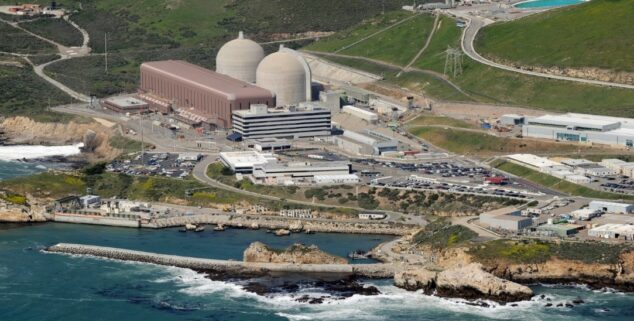Opinion
California’s power grid faces potential reliability challenges
 Image via Getty Images.
Image via Getty Images.Capitol Weekly welcomes Opinions on California public policy or politics. Click here for more information about submitting an Op-Ed.
OPINION – The U.S. Department of Energy’s 2025 Resource Adequacy Report is a critical moment of reflection for California’s electric grid. As our state leads the nation in clean energy adoption and grapples with rising electricity demand, the report discusses issues that Californians cannot afford to ignore. While California’s progress toward a cleaner and more resilient grid is real, the report signals that without sustained investment in reliable power sources, we could face serious reliability challenges by 2030.
California has made impressive strides in recent years. Thanks to aggressive investments in solar, wind, and battery storage, along with smart grid management, the state’s grid is stronger and better prepared to handle extreme weather than ever before. The California Independent System Operator (CAISO) recently reported no Flex Alerts during 2024’s extreme heat, signaling progress in balancing supply and demand. The extension of the Diablo Canyon nuclear plant and new emergency reserves have further stabilized reliability while renewable projects and storage come online.
Yet the DOE report paints a larger picture of a nation-wide reliability shortfall driven by retiring coal and natural gas plants and surging electricity use — especially from AI data centers and other inflexible high-demand facilities. While California benefits from a clean energy transition, it is not immune to similar pressures. The report estimates that nationally about 104 gigawatts of firm generation are scheduled to retire by 2030, with only around 22 gigawatts of firm resources expected to replace them. That leaves a significant gap that stresses the entire grid.
California’s growing economy and accelerating shift to electric vehicles, heat pumps, and data centers add to this challenge. AI data centers, projected to add roughly 50 gigawatts of load by 2030 nationwide, require constant, high-quality power — power that intermittent renewables alone cannot guarantee. California’s energy planners must consider these trends carefully in their resource adequacy assessments.
The truth is even the best solar and wind projects, no matter how plentiful, cannot fully replace the steady output of firm generation plants. The sun doesn’t shine 24 hours a day, and the wind doesn’t blow on demand. Without enough dispatchable resources able to operate flexibly, California could face capacity shortfalls, especially during prolonged heat waves, wildfires that threaten transmission lines, or other climate-driven emergencies that will only grow more frequent.
Moreover, the pace of building new reliable generation, transmission lines, and long-duration storage needs to accelerate significantly. California’s previous success relied on rapid deployment and expanded grid integration, but the window to secure firm generation capacity to replace retiring thermal plants is narrowing. The DOE’s forecast that only 22 gigawatts of firm capacity will come online nationally by 2030 is cautiously low — and challenges state and federal regulators to expedite approvals and grid planning.
California also must have deeper coordination with regional partners across the Western grid to better share resources and balance loads. The Western Energy Imbalance Market, for example, has already improved reliability by enabling more efficient imports and exports of power among states. Strengthening these regional collaborations will be vital to managing grid stress as demand rises and resources evolve.
Ultimately, this is not just a technical issue for California’s energy agencies or utilities. It has real consequences for residents, businesses, and the state economy. Unpredictable outages disrupt daily life, threaten critical services, and raise electricity costs — disproportionately impacting vulnerable communities. Our green energy goals depend on a reliable grid foundation; without it, progress toward decarbonization stalls.
The 2025 DOE Resource Adequacy Report is not a reason for alarm but a call to action. California’s track record shows it can lead the way on clean, reliable energy — but only with continued investment in firm generation, transmission upgrades, improved planning, and adaptive regulation. Policymakers must balance the pace of clean energy integration with pragmatic steps ensuring grid stability.
California’s future energy security depends on making smart, timely decisions that recognize the limits of renewables without firm backup and that accommodate the growing realities of AI and digital infrastructure demand. With clear focus and collaboration, California can build a power system that is clean, resilient, and prepared for the challenges ahead.
The report’s warning is clear but so is the opportunity: This is California’s chance to demonstrate how a modern grid can meet the urgent demands of tomorrow without sacrificing reliability today.
The time to act thoughtfully and decisively is now.
Alec Sarkissian is the Executive Director of Green Policy Initiative and a current student at Sacramento City College.
Want to see more stories like this? Sign up for The Roundup, the free daily newsletter about California politics from the editors of Capitol Weekly. Stay up to date on the news you need to know.
Sign up below, then look for a confirmation email in your inbox.

Independent nonprofit Californians for Green Nuclear Power (CGNP) has a pair of relevant viewpoints articles published in Capitol Weekly. The most recent is “Passing SB 540 means more coal in California,” Gene Nelson, Ph.D., August 28, 2025, Capitol Weekly. https://capitolweekly.net/passing-sb-540-means-more-coal-in-california/
SB 540 was renumbered as AB 825 three days before it was passed by the Assembly and State Senate on the very last day of the 2025 legislative session on Saturday, September 13, 2025.
The earlier article was “Closing Diablo Canyon spurs fears over replacement power,” Gene Nelson, Ph.D., April 5, 2022, Capitol Weekly. https://capitolweekly.net/closing-diablo-canyon-spurs-fears-over-replacement-power/
This pair of articles serve as an introduction to the role of Berkshire Hathaway subsidiary PacifiCorp in altering California’s electricity policies to import increasing amounts of PacifiCorp’s coal-heavy generation from its large power fleet in and near Wyoming.
California needs clean firm power from nuclear power plants such as Diablo Canyon and Palo Verde in Arizona. PacifiCorp’s apparent goal is to substitute pollution-laden firm power from out of state.